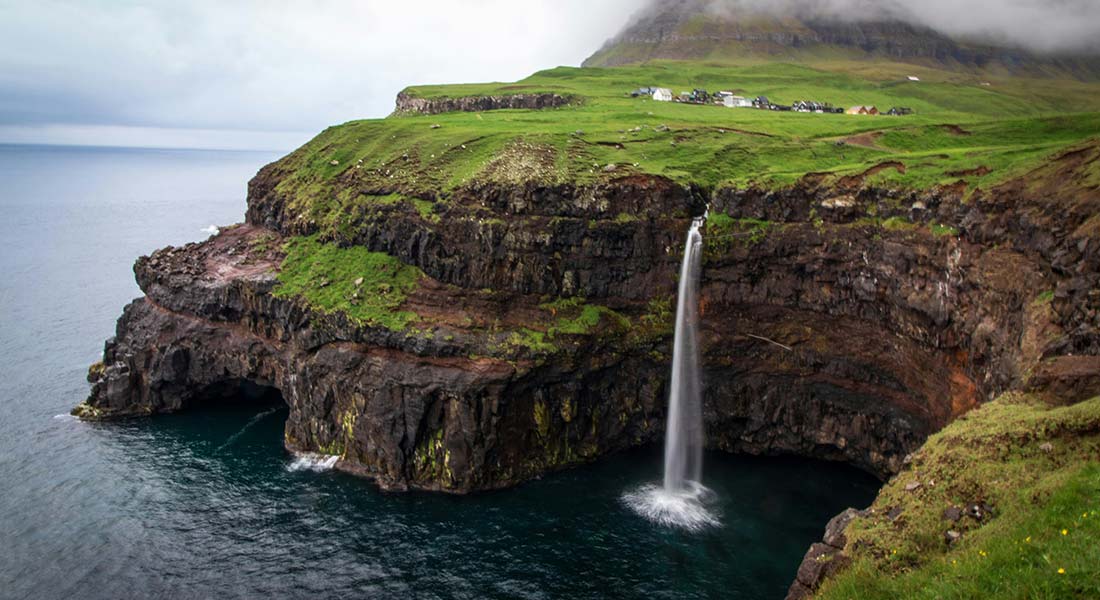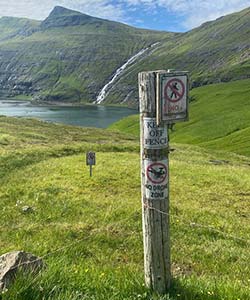Tourism in the Faroe Islands is growing rapidly and now generates more than one billion Danish kroner annually. However, the successful tourism industry risks destroying the unique, untouched nature that is used to attract visitors. A new PhD thesis sheds light on the dilemmas facing the Faroese tourism industry.

Visit Faroe Islands, the Faroe Islands' official tourism board, has in recent years successfully promoted the islands as "Europe's best‑kept secret." The campaigns have highlighted the rugged, pristine landscapes that visitors can experience and the fact that the Faroes were, until recently, a relatively unknown travel destination.
However, the very story of an authentic natural experience exposes the dilemmas created by the tourism boom, shows a new PhD dissertation by Hanna Birkelund Nilsson from the University of Copenhagen.
"The more tourists the effective branding manages to attract, the harder it becomes to deliver the authentic, untouched nature experience many tourists seek. At the same time, the influx of visitors poses a problem for vulnerable environments that are already suffering under tourist pressure, and this has sparked debate in the Faroe Islands for years," she says.
No trespassing

As part of her research, Hanna Birkelund Nilsson has analysed the linguistic strategies Faroese people use to manage tourists.
One of the most visited places in the Faroe Islands is the remote settlement of Saksun, which has only 13 inhabitants. It is particularly popular on Instagram, where many post images of the spectacular nature surrounding the village.
"In 2023, there were longstanding problems with tourists trampling the grass that sheep need to eat, so locals in Saksun put up sharply worded English signs to regulate tourist behaviour or, at times, to discourage visitors altogether. At the same time, I found signs that guided tourists toward the village's commercial offerings," says Hanna Birkelund Nilsson and adds:
"This illustrates a paradox in which tourism is both desired and unwanted at the same time. Such a paradox is not unique to the Faroe Islands but is characteristic of the tourism industry more broadly, where economic potential and negative consequences tend to coexist."
According to the researcher, the regulatory English signs are especially common in the small villages where tourism is most noticeable and causes the greatest problems. Today, residents of Saksun have changed strategy and now promote the village as a heritage site.
A critical guide
The Faroe Islands have only 55,000 residents but receive about 130,000 tourists a year.
Hanna Birkelund Nilsson's dissertation Exploring the "unexplored" - a sociolinguistic exploration of tourism in the Faroe Islands examines how the Faroes have attracted and managed the large numbers of visitors.
The dissertation comprises three research articles. Two have already been peer reviewed and published:
- The commodification of (bad) weather: Destination branding of the Faroe Islands
- Challenges and opportunities: Tourism tensions in the Faroese Linguistic Landscape.
During her fieldwork in 2023, Hanna Birkelund Nilsson also witnessed how tourism produces conflicting experiences even for Faroese people who make a living from it.
"A tour guide I followed placed great emphasis on sustainability and was highly critical of the tourism industry. She complained about tourists' poor understanding of local Faroese customs and reprimanded visitors who stepped outside the marked paths," says Hanna Birkelund Nilsson and continues:
"It is a paradoxical double role: she makes a living by showing tourists around, yet she is strongly critical of tourism and its consequences for the environment and local communities."
But her paradox is also the Faroe Islands' paradox, the researcher stresses:
"Tourism represents a large and important economic gain for a small country that hopes to achieve greater independence over time. But if tourism destroys the unique nature and creates social tensions, continued growth in visitor numbers will be difficult for authorities to justify."
For that reason, the Faroese parliament enacted a law in 2024 that, among other things, intended to give local communities greater influence over development. Most recently, Visit Faroe Islands launched a campaign promoting self‑navigating car rentals to spread out visitors more evenly and avoid overburdening popular sites, which put pressure on nature and local communities. Whether these measures will solve the challenges posed by tourism remains to be seen.






